
Jutul
Experimental Julia framework for fully differentiable multiphysics simulators based on implicit finite-volume methods with automatic differentiation.

The theory of flow through porous media constitutes a fundamental approach for unravelling the intricate behaviours of fluids in complex structures characterized by interconnected voids and solid matrices. By utilizing partial differential equations and transport equations, this modelling enables us to capture the diverse factors that influence fluid flow, including porosity, permeability, and pressure gradients. Such models find applications in diverse fields, from predicting groundwater movement in hydrogeology or geo-energy applications to optimizing filtration processes in chemical engineering.
A major part of our research aims at developing enabling simulation technology for improved and enhanced hydrocarbon recovery and carbon storage. To accelerate innovation, we have had a long-time, strategic focus on delivering and disseminating our research through open-source software:
Over the years, we have researched many different problems and computational methods. The MRST website contains descriptions of some examples, including multiscale methods and novel ideas like flow diagnostics. You can also watch an overview lecture that explains the history and the capabilities of the MRST software (90 min version, 30 min version).
The GeoScale website documents activities from the early years of the research group.
| Textbooks | ||
|---|---|---|
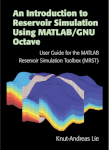
|
K.-A. Lie. An Introduction to Reservoir Simulation Using MATLAB/GNU Octave, Cambridge University Press, 2019, ISBN 9781108492430. DOI: 10.1017/9781108591416 | |
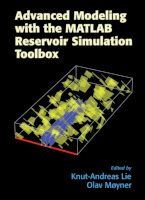
|
Advanced Modelling with the MATLAB Reservoir Simulation Toolbox. Edited by K.-A. Lie and O. Møyner. Cambridge University Press, September 2021, ISBN 9781009019781. DOI: 10.1007/s10596-011-9244-4 | |

Experimental Julia framework for fully differentiable multiphysics simulators based on implicit finite-volume methods with automatic differentiation.

A free open-source community code for rapid prototyping of new methods for modelling and simulation of flow in porous media. Has a large user community from all over the world.

The Open Porous Media (OPM) initiative provides open-source software for simulation, upscaling and visualization of porous media processes, in particular subsurface reservoirs.
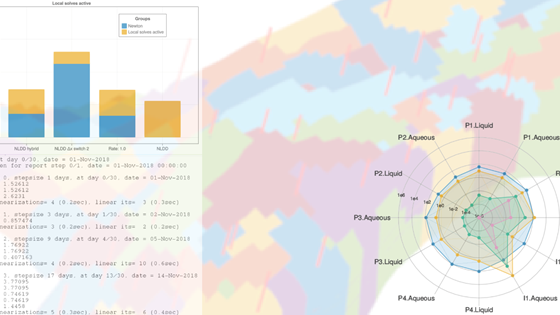
Reservoir simulation, an essential tool in the oil and gas industry for predicting reservoir behavior, often incurs significant computational expenses. This arises from the intricate nature of subsurface flow dynamics and the need for high-fidelity...
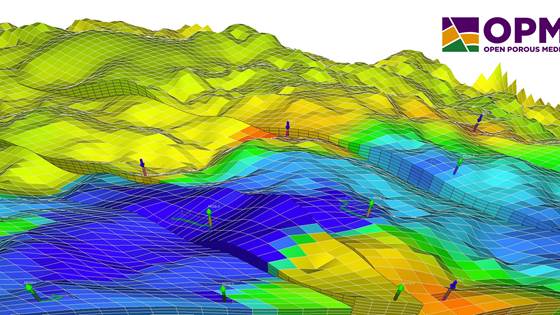
In this project, a consortium consisting of SINTEF, NORCE and OPM-OP provide support and maintenance services for the OPM Flow reservoir simulator software.
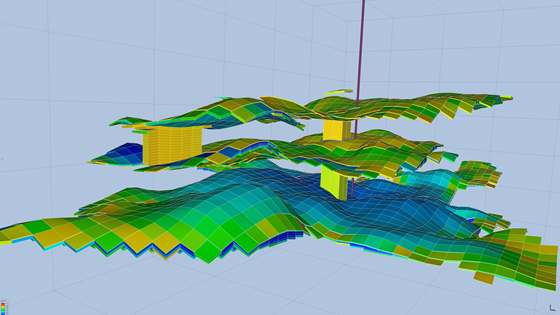
ACROSS aims to combine traditional High-Performance Computing (HPC) techniques and workflows with Artificial Intelligence (AI) and Big Data analytic techniques to enhance productivity and efficiency.
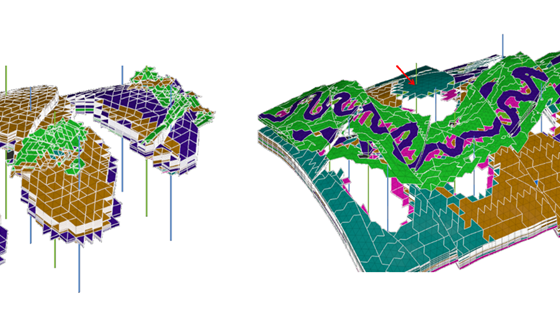
To optimize hydrocarbon reservoir recovery, understanding and predicting flow and transport processes is crucial. Geo-cellular models, representing complex rock formations, often contain millions of cells, requiring hours for simulation. To expedite...
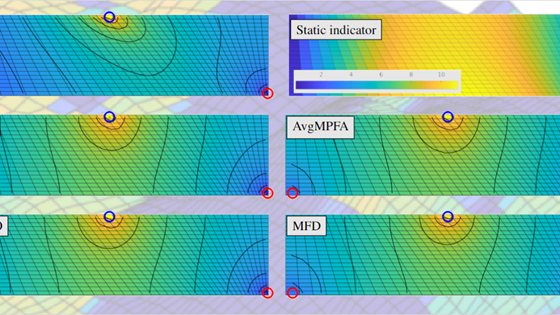
The purpose of the project is to assist the client in the development of an industrial solution for multiphase and coupled flow-geomechanical simulations on unstructured grids representing structurally complex reservoirs.
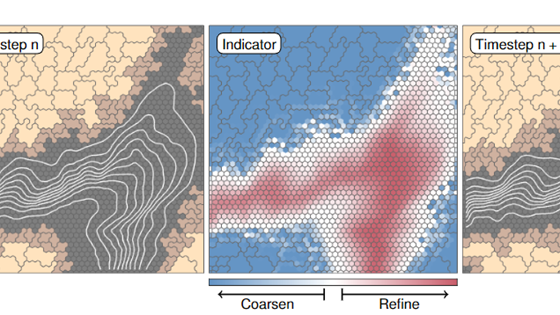
Multiscale methods, such as MsRSB initially proposed by SINTEF, have emerged to enhance runtime efficiency and pressure solve scaling in reservoir simulators using sequential splitting. Starting from the methods successfully implemented in the...
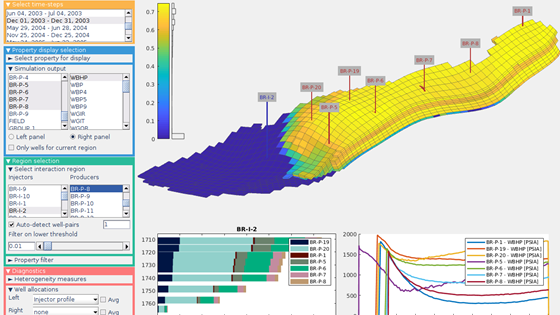
The primary objective for the project is to contribute to increased recovery from the NorwegianContinental Shelf by developing new flow-diagnostic methods that reduce the turnaround time to design andoptimize waterflooding and water-based EOR schemes
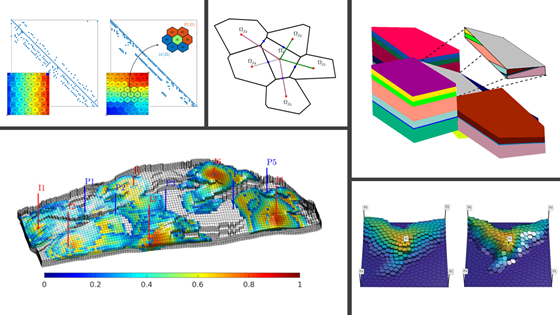
We study and develop numerical tools that can be used to improve the resolution of EOR simulations and, in particular, capture accurately the impacts of the injected chemicals on the recovery process.
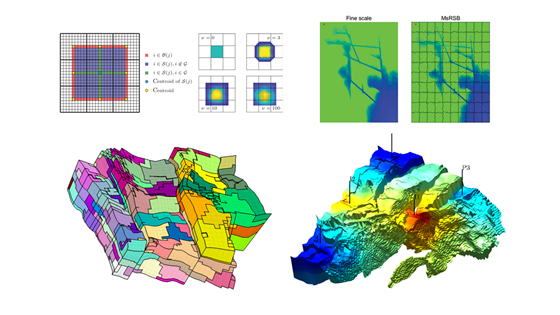
This project strives to broaden the scope of multiscale technology by delivering substantial acceleration to conventional reservoir engineering workflows. By doing so, it not only facilitates a considerable speedup in traditional processes but also...
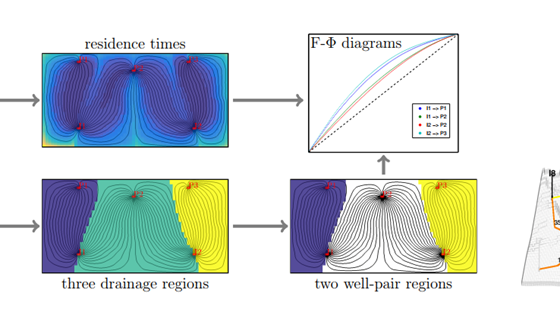
Modern reservoir simulators provide detailed forecasts of hydrocarbon recovery based on a description of the reservoir, the fluid dynamics, well controls, and couplings to surface facilities. In model-building workflows it is often desirable to...
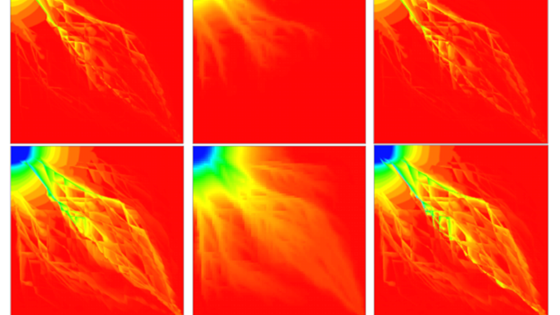
The purpose of the project is to develop a prototype multiscale mixed finite-element pressure solver in the ECLIPSE FrontSim streamline reservoir simulation software. FrontSim is a three-phase, 3D simulator that models multiphase flow of fluids along...
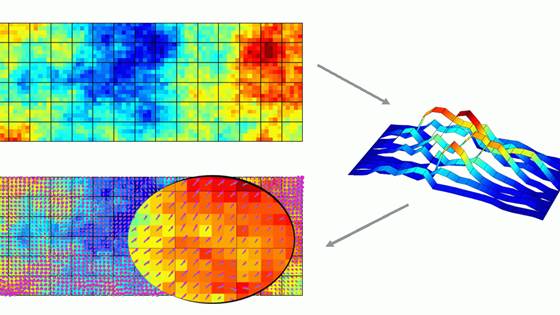
Modern methods for 3D geological modelling and reservoir characterization are leading industry to routinely build very large and detailed reservoir models; grid models of the subsurface geology currently range in size from 10 to 100 million cells and...